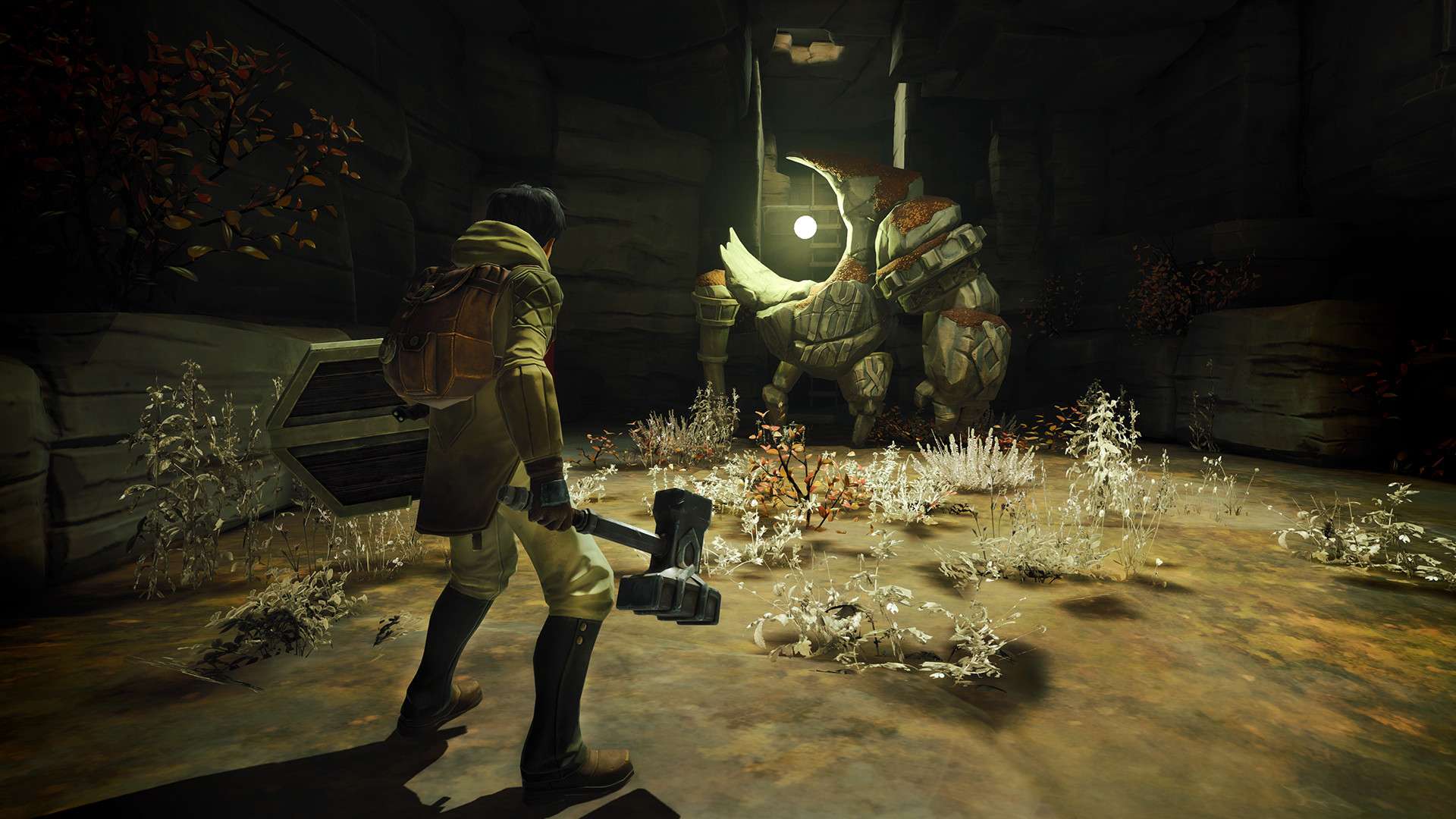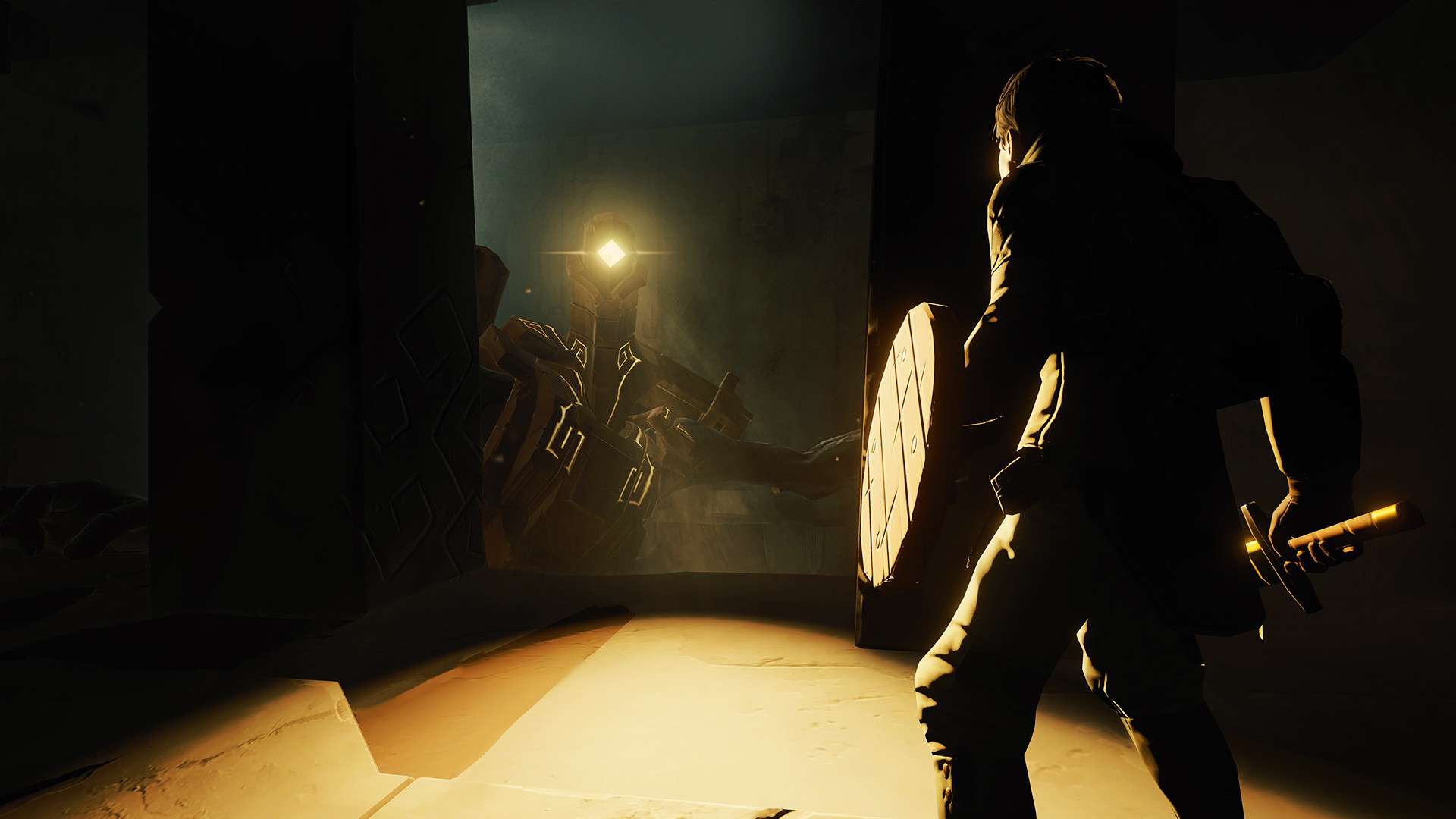
Chronos: Before the Ashes PC Review
Chronos is not a new game. It has been available for over four years now, but strictly as a VR title and, to limit the player-base even further, was only available on the Oculus Rift. Fortunately, due to the huge success of the fantastic sequel – Remnant: From the Ashes – Chronos has finally been made available for all, releasing on Steam with the VR requirements ripped out. Whilst it’s very different from its successor, what with being melee-focused and puzzle-heavy, it’s genuinely surprisingly good. Usually, VR games are focused on being a good experience in VR specifically, even if the core gameplay is incredibly basic. Job Simulator, for example, would be nothing without the 3D POV; if you couldn’t reach into the game and play with the objects in the environment directly it would hardly be a game at all. Chronos, on the other hand, feels more like a game where the VR was the gimmick and I can’t even imagine how awkward it must have controlled with the fixed camera switching between rooms like you’re watching through CCTV, much like the older Resident Evil games.
You will hear it be called a ‘souls-like’. This is probably because of the high damage output from enemies, the slower-than-a-hack-and-slash melee-centric combat, and the ability to parry or accurately time a dodge-roll around a big swing for the opportunity to follow up with some staggering attacks of your own. A lot of how the player manages fights is down to their weapon of choice, though, and if they are willing to go double-handed in lieu of a shield. There isn’t a huge variety of killing tools to choose from and most are hidden throughout the game, but they do vastly change your approach. As expected, each weapon has its own damage, speed, range, and type of attacks – with the standard sword being a speedy, decent all-rounder and the hammer being a slow, high damage, high stagger defence smasher. Oddly, however, they also benefit from stats differently – using a 1.X multiplier system. This skews the weightings of their usefulness a bit too much for my liking, as 1.8 damage over 1.2 is simply too big of a difference to forego and almost forces players to completely abandon certain weapons.

Still, I found myself swapping between several options now and then, to deal with particular enemies (especially those tough-as-nails shield tanks), and the simplicity of the combat in general was actually sort of refreshing. It’s all boiled down to the core elements of dodging and attacking – no back stabs, items to douse a blade in, or ranged options and magic weaknesses to consider. And although the form is tied to whatever the player is wielding, there is a nice array of different enemy types to learn the patterns of and overcome that are drip-fed constantly throughout the game – even more so when they start to group them up in greater numbers and the environments are used to limit the player’s mobility. The great diversity is in large part due to the different worlds known to the Ashes universe, each brimming with a unique atmosphere and host of inhabitants, that the player must make their way through and defeat the guardians of in an attempt to save the human realm from a powerful dragon.
Remnant players will be happy to see that a Chronos-exclusive world, home to the Krell, is where it all starts. Then, after the familiar Pan setting (which also happens to be the prettiest, for its ancient temples and luminescent flora), that the Labyrinth brings with it its own host of enemies, also not seen in the sequel. The stories do cross over… sort of. Though not directly related, the weirdly complex and vast lore of the Ashes franchise (which I personally find creative and endlessly intriguing), that was first established in the original VR version, seems to have only been deepened by Remnant, even continuing the story of Ford – a character only mentioned by name in a couple of documents here. One huge divergence is the aging mechanic that was obviously scrapped for the follow-up and for good reason. Perhaps the most commonly marketed selling-point for this game is that every time the character dies, they age by one year. Now I didn’t quite get if that means they are instantly stripped of a year of life, or if they are sent back home for a year, where they can train and improve – which makes thematic sense as new passive upgrades are made available via growing older, but either way it’s pretty unengaging in practice.

Besides literally aging your character model and the passive unlocks available each ten years from twenty to eighty (which include things like XP boosts and generic damage increases), aging is really all about one thing – the character gets weaker and slower. That doesn’t mean the skills you’ve focused on decay but instead it makes certain ones, namely Agility and Strength, more expensive going forward, whilst Arcane becomes cheaper, and I’m not entirely sure what happens with Vitality. What is Arcane, though? I honestly couldn’t tell you. Besides a handful of equippable ‘stones’ found throughout the game, that use a charging mana system and reward a temporary boost to attacks or invulnerability etc on use, there doesn’t seem to be any spells in the game at all, so I’m not sure what it improves. It’s an interesting concept but also kind of a non-starter. It’s never really explained well and indirectly funnels players into following the same build as I’m sure most people would gravitate towards boosting the cheaper ones first. Plus, because the game really isn’t all that challenging, the transition to relying more on wisdom and less on the strength of youth never really comes to fruition.
Put it this way – I ended the game at age forty-nine, and way too many of those deaths were spent tackling the final boss, so I never got to experience the other side of things at all and I doubt many others will. At least that system stands on its own and isn’t integrated too heavily into the other character progression mechanics. There’s a basic RPG leveling system based on experience gained from kills, used to make base stat increases; and item drops, used to upgrade weapons. Nothing is overcomplicated. These systems are simple and satisfying. The four available areas in which your character can be improved are all that’s needed – no luck, insight, specific types of damage reduction, or anything else unnecessarily bloated – and I loved that. Everything is streamlined and quickly accessible, and for a six to eight hour game, it’s just right. Well, almost everything is accessible. I know puzzles aren’t for everyone and maybe not something to expect out of a game like this but they completely hooked me.

It’s no secret I’m a huge puzzle fan and nothing feels better than having to grab some paper and a pen to keep track of everything. Jotting hidden codes, taking note of blocked passages, and reminders on what items I had at my disposal was kind of vital. Partly because there’s a lot to remember but also because if you miss something in Chronos, you are screwed. There are no hints or alternate routes, so if you don’t realise that an object can be interacted with directly, instead of using another item on it, that might lead you to recording almost forty minutes of directionless gameplay, checking absolutely every inch of the game thus far… I’m sure this directionless grab at trying anything to progress, which I believe was more of a UI issue than anything else, will frustrate many people, but the solving of the puzzles themselves is incredibly gratifying. Especially so when rewarded with another permanent healing item or new ability stone to play with.
This title is a really strange one. Its small scale and simplistic nature betray just how much it has going on when you get down to it. Whilst it could be improved in many ways and the aging thing needed to be explored more deeply, I actually really enjoyed my time with it. It’s a great game with just a couple of things holding it back and I think that says a lot for something that was made just for VR, although I expect there’s a story behind that. It very clearly does not need VR to function and is nothing like any other game in that category. In my opinion this feels like it was developed as a stand-alone game and was pivoted to VR for whatever reason. Either way, I’m glad to see it be freed of that restriction. It may partially be due to my love of Remnant and the history that Gunfire Games have carefully crafted but I would recommend this one to anyone whose interest is piqued by the look of it. Give it a shot, I’m sure you won’t regret it. Moreover, we might get a third Ashes game if enough support is there – I hope it is!
